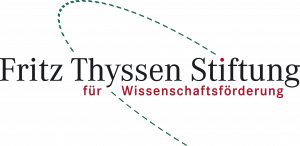De-and restabilizations of the European border regime
The research project takes the current crisis of the European migration and border regime as a starting point. This crisis has become manifest in the strongly increased number of refugees that entered core Europe since 2015. The ethnographic research investigates current approaches of the European states seeking solutions and to restabilize the European border regime.
The year 2015 and the arrival of around one million refugees in Germany marks a far-reaching break with the previous migration- and border policies, which have emerged since the Amsterdam treaty 1999 and the Schengen Agreement and which are characterised by a europeanization of border management, the tacit emergence of a Common European Asylum System and the externalization of border controls.
The refugee movements have not only destabilized the existing systems of European migration management. Moreover they have caused a deep crisis within the EU, its transnational policy making as well as the whole Schengen system as a keystone of the European Union. This can be discerned for instance on the controversy regarding the internal distribution key and a fixed quota system, the introduction of national border controls or rather the closing of national borders.
The attempts to recover the control over migration movements as well as the overall restabilization of the Schengen system are at this point highly unclear and heterogeneous. However they currently take shape.
This research project investigates the different stabilizing attempts which are based on very different conceptions as well as visions of “Europe” (geographically as well as politically) in the particularly affected South-East European border regions in Turkey, Greece, as well as in the Balkan states. In a “multi-sited ethnography” three regional research teams examine the question, how – through which politics, practices, discourses and actors – the control over movements of migration is planned to be reinstated and which effects and implications this will have for the shape of the (Schengen) border as well as for the EU-European project as a whole.
Researchers involved:
Prof. Dr. Sabine Hess (University of Göttingen), Dr. Vassilis Tsianos (University of Applied Sciences Kiel), Marianthi Anastasiadou (University of Education, Freiburg), Dr. Barbara Beznec, Dr. Fırat Genç, Dr. Gerda Heck (University of Göttingen), Bernd Kasparek (University of Göttingen), Dr. Brigitta Kuster, Prof. Dr. Athanasios Marvakis (Aristotle University of Thessaloniki), Panagiota Amarilis Mezidou, Dr. Dimitris Parsanoglou (Panteion University Athens), Marc Speer (University of Göttingen)
Funded by Fritz Thyssen Foundation

![Logo_komplett_r_vekt_Farbe Kopie [Konvertiert]](http://transitmigration-2.org/wp-content/uploads/2016/04/Uni-Goettingen-Logo-4c-RGB-600dpi-300x56.jpg)
